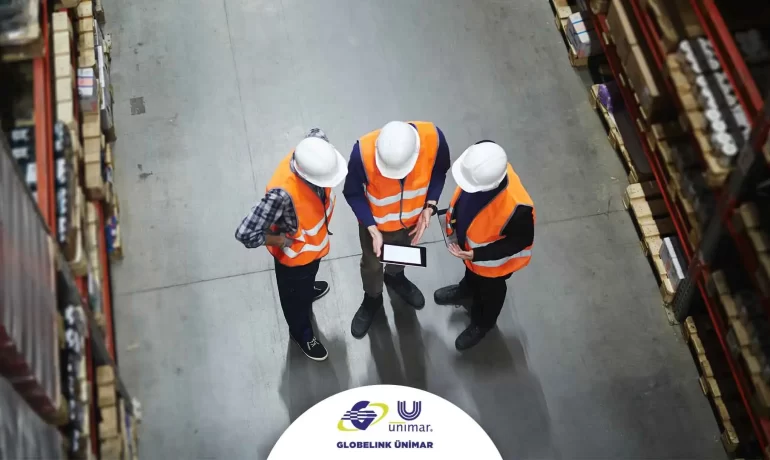
The halts in production, the closing of borders, decreasing demands and the state of emergencies declared by the countries due to the COVID-19 crisis, which left the international economy with a great depression and uncertainty, also disrupted the global supply chain.
For the epidemic crisis that brought many sectors to a halt, the IMF used the expression the biggest “misfortune and economic collapse the global economy” has experienced since the Great Depression in early April. The United Nations and OECD say the World economy may shrink between 1 and 3 percent in 2020, and it is inevitable that countries’ GDP will shrink by 2.4 to 3 percent. Experts point out that the loss of export revenue for developing countries will be around 800 billion dollars. China, which is the largest exporter in the world and produces one-third of the products globally, has seen a historical decrease of 13.5 percent in exports in the first two months of the year.
While the global economy struggling with the pandemic, its impact on the global trade and supply chain caused a rapid deterioration in global investment flows. International trade and the global supply chain have been disrupted by the halt of production outside the factories producing essential goods, the cancellation of orders worldwide, countries declaring a state of emergencies, the price of fuel and the closing of borders. Turkey also stopped flights to some countries in the February-March period. The global air cargo industry, which played an essential role in the mobility of critical and time-dependent shipments, and thus the continuity of the global supply chain, fell more than 3 percent year-on-year in the January-February period alone. In airline freights, the cancellation of passenger flights and the decrease in cargo capacity caused up to 20 percent increase in airline freight prices between Europe and America.
Economic deadlocks in the regions caused great difficulties in road freight transportation and distribution services. In March 14 countries closed their borders to other countries. The emergence of labor along with the border problems in ports and terminals has increased the supply chain problems inland transportation. Besides, there are serious labor shortages not only on the highway but also in air cargo facilities, terminals, shipping ports, inland container warehouses, customs and state authorities.
The decline in demand for commodities and raw materials put the global shipping sector in a downturn; the uncertainty over the ocean overload industry is growing. Tight restriction measures implemented by governments around the world have led to reduced trade and cargo volumes in the US and Northern European ports.
The dramatic contraction that China has seen since January has been one of the most important reasons that prevented the global manufacturing supply chain. At that time, there was a 10.6 percent decrease in the volume of containers in the ports.
Due to the uncertainties created by the pandemic today, the loss of growth and loss of the global supply chain is unknown. The global supply chain management market was worth 14.5 billion dollars in 2018 and was expected to reach 24 billion dollars in 2024; this means a growth rate of 10.5 percent for each year, but it is an accepted fact that this average will decrease and the deadline to reach the targeted figure will be postponed.
The global logistics industry had a 1.2 percent growth in 2019 despite everything being turbulent due to the stagnant global economy, trade disputes, geopolitical uncertainties and environmental regulations. In the first quarter of 2020, with the COVID-19 reversing growth in all areas of the economy, the logistics industry also made a bad start.
In April, including many countries, Turkey started the normalization process within its own borders. However, many suppliers are still unable to deliver orders on time. According to the report released by Deloitte in May, the problems in the supply chain will continue for a while due to reasons such as dependence on Asian markets on the supply side, and quarantine restrictions in warehouse and logistics operations.
New Measures on the Supply Chain
Turkey, like all countries, is putting its own action plans for the continuity of both logistics and supply chain to protect public health.
Due to limitations of the commissioning of the European Union, road freight transport between Turkey and Europe continues with a limited capacity. Because the airways are closed, drivers cannot travel by plane, so there are disruptions in Ro-Ro cruises. This ensures a delay in exports. In April, the International Transport and Logistics Service Providers Association (UTIKAD) sent a report with the content of “Measures to be Taken in European Directional Road Transport within the Scope of COVID-19” to the Vice President Fuat Oktay to make way for road transport. In the report, it was suggested that Turkish and foreign drivers carrying import and export loads should be implemented from the rapid diagnostic tests approved by the Scientific Committee, and the implementation of continuing the trips of the drivers whose results were negative.
On the other hand, the Ministry of Health has allowed the establishment of a “mobile laboratory”, which gives the coronavirus test results (PCR test) within 15 minutes to eliminate the problems, intensities and delays seen at the Kapıkule Customs Gate. Thanks to this laboratory, it is stated that delays will be prevented especially in European transports.
Contactless Period in Trade
There are different solutions laid out to continue transport to the Middle East, which has the highest rate of foreign trade transportations between Turkey and European countries. Accordingly, Minister of Trade Ruhsar Pekcan announced that they have launched the “contactless trade” system against COVID-19. Contactless trade and buffer zone systems established as part of this aim to ensure the sustainability of trade with neighbors.
A buffer zone was established on March 1 on Habur border gate, through which Turkey exports 9 billion dollars annually to Iraq, as a part of pandemic measures. In the buffer zone, container, trailer and driver change takes place without contact.
The borders with Iran, where 130 thousand trucks go annually, were closed on 23 February. Since there is no area to be installed in the buffer zone here, the exit method here was the contactless locomotive. After negotiations with Georgia and Azerbaijan, the Ministry of Trade increased the capacities of Türközü, Çıldır-Aktaş and Sarp customs gates, made these routes operational for 24 hours and opened a line to Iran through these border gates. On the Kapıköy side, wagons pushed by locomotives are being towed by locomotives on the Iranian side. It is said that there are 120 wagons served daily from this customs gate.
Trade at Kapıkule border gate is carried out by changing the vehicles, trailers and drives in the buffer zone. Domestic and foreign truck drivers coming from abroad are taken to the 14- day mandatory quarantine process. It is stated by the Ministry of Commerce that the tails have decreased in Kapıkule with the implementation of the applications.
Trade continues to Central Europe, Italy and France continue. Trade is carried out to Trieste and Bari ports in Italy from Pendik, Tuzla, Ambarlı, Yalova, Çeşme and Mersin ports; vehicles are sent to Toulon and Sete ports in France, by ferries without a driver. The vehicles are taken by tow trucks on the opposite side.
The capacity of the train in Kapıkule was increased from 35.8 thousand wagons to 50 thousand wagons. The carrying capacity of the railway line in Çerkezköy was doubled. Goods going to Bulgaria will be transported through this line.
Artificial Intelligence is Both Changing and Transforming
Today, we can see the clues that we will
The Future of the Cargo Market is Shaped by e-commerce
The e-commerce industry has been growing rapidly since the



